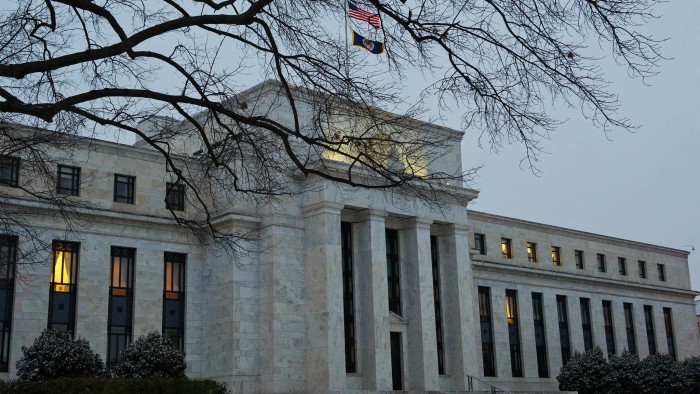‘Super taper tantrum’ ahead, warns IMF

Simply sign up to the Global Economy myFT Digest -- delivered directly to your inbox.
The Federal Reserve’s first interest rate rise risks triggering a jolt to bond markets that could surpass the turmoil the central bank inadvertently set off in 2013, the International Monetary Fund has warned.
José Viñals, the director of the IMF’s monetary and capital markets department, warned of a “super taper tantrum” and spiking yields as the US central bank gets nearer to lifting rates from near-zero levels. “This is going to take place in uncharted territory,” he said in an interview.
In its Global Financial Stability Report, released on Wednesday, the IMF argued that risks have not only risen worldwide, but that they have rotated to parts of the financial world that are harder to monitor — including to the non-bank sector.
Among the key worries are “severe challenges” brewing in the EU life insurance sector amid plunging interest rates in the region. Many policies are offering generous return guarantees that are “unsustainable” in a prolonged low-interest rate environment, the IMF warned, highlighting German and Swedish firms.
Speculation about the impact of the first Fed hike in nearly a decade is dominating global markets. As things stand, markets are pricing in a lower trajectory for rate increases than Fed officials in the face of signals from the central bank that “lift-off” is looming this year.
In the report, the IMF said a sudden rise of 100 basis points in 10-year Treasury yields was “quite conceivable” once the market wakes up to the possibility of the first rise in official rates in nearly a decade. “Shifts of this magnitude can generate negative shocks globally, especially in emerging market economies,” the IMF said.
Higher US interest rates could expose particular vulnerabilities in emerging markets where companies have issued large amounts of debt in dollars, the IMF said, adding that between 2007 and 2014 debt had grown faster than GDP in all major emerging markets.
Mr Viñals also laid out a scenario which he called a “Yellen conundrum” in which the central bank is forced to tighten policy more sharply than planned because longer-term interest rates do not respond to hikes in the Fed’s target range. “This exit is a lot more complex to figure out, and this is behind the uncertainty that there is in the markets,” he said.
The risk of volatility is being heightened by changes in the bond markets which are reducing liquidity — or the ease with which securities can be sold.
“The liquidity-inhibiting impact of regulatory changes, industry consolidation and other secular factors will likely become more pronounced,” the IMF said.
“Markets could be increasingly susceptible to episodes in which liquidity suddenly vanishes and volatility spikes,” it said, pointing to episodes including the price gyrations seen in US Treasury prices last October.
Mr Viñals also said that for quantitative easing to gain more traction in the euro area, the region needed to deal with the banking sector’s overhang of non-performing loans.
“You don’t want to just be happy with the fact that borrowing costs are falling and that equity prices are rising and that the euro is depreciating, all of which is good for price stability and growth in the euro area. You also need to unblock the bank credit channel, and for that you need to decisively deal with non-performing loans,” he said.
While the stability report flagged risks looming in the financial sector, the IMF’s economic forecasting wing had a more optimistic take on the outlook. Releasing growth forecasts on Tuesday, Olivier Blanchard, the IMF chief economist, said: “I sense the macro risks are smaller than in October — there is no reason for doom and gloom.”
The IMF analysis was released ahead of spring meetings of the IMF and World Bank in Washington this week.
Comments